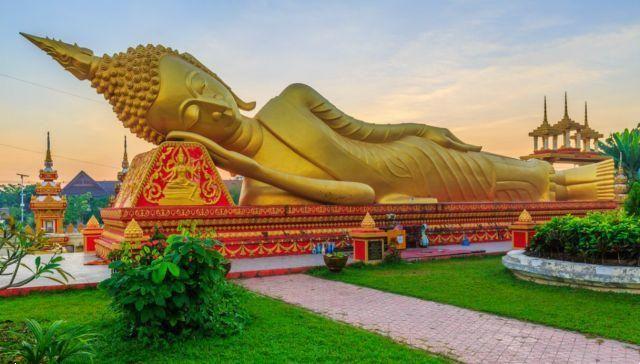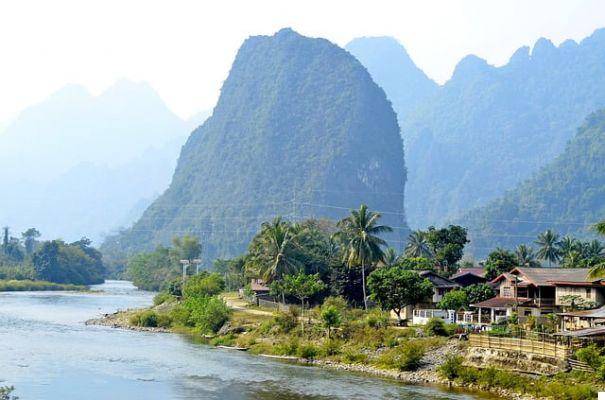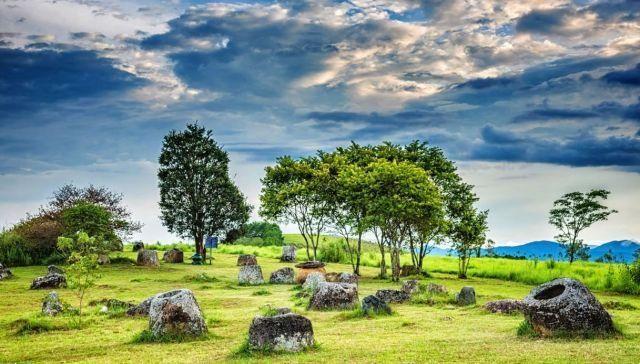 Tour the capital of Laos, Vientiane, with its many Buddhist temples, Buddha Park, Cope Media Center and Mekong River Market.
Tour the capital of Laos, Vientiane, with its many Buddhist temples, Buddha Park, Cope Media Center and Mekong River Market.
A holiday in Laos represents an opportunity to take a break from the intense and frenetic pace of Western life, to embrace the slow and meditative flow of time that is perceived in the East. It's strange to say but a city in what was once called Indochina, a city like the capital of Laos, Vientiane – around 800 thousand inhabitants – certainly offers the comforts of the large metropolis but also unexpected moments of relaxation, peace, concentration and meditation.
Vientiane expands on an inlet of the Mekong River, its main roads that carry traffic are parallel to the riverside while the widest and widest street, Lane Stupa, the most important religious monument in Laos.
Most restaurants, cafes, hotels and guesthouses are in the city center and walking around the capital of Laos is quite easy, either on foot, by bicycle or via one of the many traditional tuk tuk (colourful three-wheeled motorbike taxis). There are many small shops selling foodstuffs, including Western ones, and other basic necessities. The variety of cuisine present in Vientiane is very wide and you can easily go from street stalls to restaurants offering local, European, Japanese, Indian or vegetarian cuisine.
But the capital of Laos is also something else that goes beyond the sometimes predictable routine of the Western tourist. It is an authentic city where there is no shortage of tourists but tourism does not yet have its true nature. It is a city moved by the blue of the waters of the Mekong, the orange of the monks' robes, the bright colors of the temples, the haughty and somewhat ancient nobility of the colonial buildings slightly chipped and the squared and somewhat anonymous profiles of the government buildings.
La bicycle it is perhaps, then, the ideal vehicle for slow exploration of the capital of Laos. Renting one, in the many guesthouses and shops in the centre, costs the equivalent of around one euro per day (10.000 kip in the local currency). You get on your bike and go, easily and safely, towards the Patuxai, the Triumphal Arch of Vientiane - built between 1962 and 1968 in memory of those who died in the war for independence against France - where you can stop to admire the city from above (entrance 3.000 kip), but also its famous musical fountain and the nearby gardens.
From there, continuing towards Th That Luang, you reach the Pha That Luang, that is, the Great Golden Stupa, the symbol of the Laotian capital. It is an imposing Buddhist religious structure built in 1566, 45 meters high and completely covered in gold. Of the Vientiane temples (called wat) that surrounded the stupa, only two remain today: Wat Thatluang Neua and Wat That Luang Thai.
The first has a large staircase that leads inside where you can admire wonderful decorations and colors. The second one is a much smaller temple of a beautiful gold and white colour. To the right of the Great Golden Stupa is the Large golden sleeping Buddha (Wat That Luang Thai), truly evocative for its majesty and grandeur. In this area you can observe the daily and prayer activities of the monks.
Vientiane is a city full of temples and the presence of Monks it is obviously a constant. The most important temples are Wat Si Saket (the oldest of those remaining intact), with its cloister which includes more than two thousand statues of the Buddha, and the Haw Pha Kaeo, now transformed into a national museum, which houses some of the most beautiful statues in all of Laos.
In the heart of the capital of Laos, between Th Khounboulom e Th Setthathirath, there are some small temples that are very discreet but much loved by the inhabitants of Vientiane: from Wat In Paeng, with its memorable stuccos, to Wat Ong Teu Mahawihan, with its enormous bronze statue of the Buddha, to the little-frequented Wat Hai Sok, to 'impressive Wat Mixaii.
At this point there is time for a passage to the Xieng Khuan, or what tourists know as the Buddha park, a park that hosts large statues of Buddhist and Hindu inspiration, born in 1958 from the original creativity of a Laotian artist, Luang Pu (the Venerable Grandfather), a decidedly alternative shaman and master yogi. In addition to the statues there is an unusual and strange multi-storey structure, shaped like a pumpkin, which represents paradise, purgatory and hell. Buddha Park is about 20 kilometers from Vientiane, you can reach it by bus from Talad Sao station or by tuk tuk.
In Vientiane you shouldn't forget to stop by, for a dutiful visit Cope (Cooperative Orthotic & Prosthetic Enterprise): not far from the Mekong, in what is the most important structure in the country for the supply of prosthetics, there is a multimedia center for visitors, where the drama of mines and unexploded ordnance is described which still cause injuries and victims every day in Laos.
Finally, as evening falls, once again, the long Mekong river, from half-empty and not very animated, transforms into a point animated by sounds, lights and colours. Vientiane moves here: people come to jog, do aerobics or group dance. During the dry season, the river recedes and, therefore, it is possible to walk on the sand, lapping the little water: a magnetic experience. And then the large park of the capital of Laos that runs along the river, in the evening, becomes a real nightmarket which attracts locals and tourists who want to go shopping or simply meet and have a chat.






